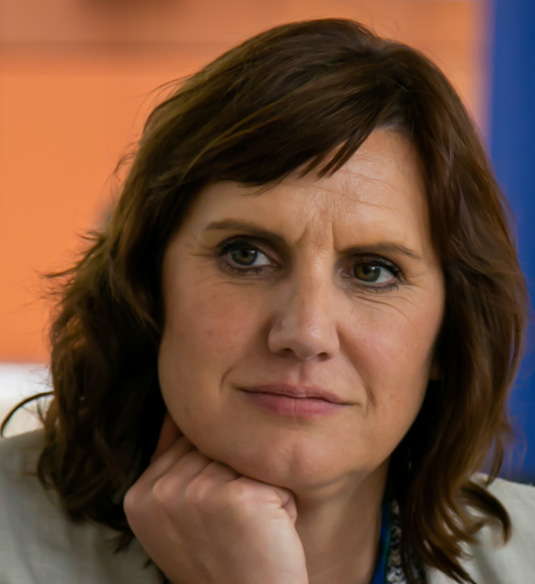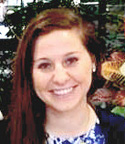Login | Subscribe | Stay Engaged | About | Partnerships | Contact
Healthcare
Social Prescribing: The Healing Power of Volunteering?

"Social prescribing" is a means for tackling poor health without, or alongside, prescribing pharmaceutical drugs. Schemes for social prescribing cover a wide array of activities and programmes, ranging from physical activities such as dance classes through culture programmes and volunteering. As research proves that volunteering has a positive impact on mental health, volunteering has become an efficient and increasingly popular way of addressing health and well-being concerns and a part of social prescribing schemes. Participating in volunteering activities in the framework of social prescribing is especially beneficial for patients with mental health issues, and/or suffer from loneliness and isolation, perhaps caused by physical illnesses or other social issues.
In this e-Volunteerism feature, author Gabriella Civico explains how volunteering is an important part of social prescribing schemes for patients. “Social prescribing leads to patients requiring less on-going support and enables them to contribute to an important cause, often continuing to support it even after the prescribed period ends,” she writes. “In this way, social prescribing has a positive impact on society as well as the patients.”
Engaging and Supporting Volunteers in Integrative Health Programs

An increasing number of hospitals and other healthcare environments are now beginning to incorporate integrative health interventions into their settings to meet the stress or symptom management needs of both patients and employees. These practices often include massage, canine visits, art, music, energy healing, guided imagery, essential oils, yoga, and Tai Chi, and work in tandem with mainstream medicine to address everything from patient boredom to emotional distress, physical symptoms of pain, anxiety, and nausea.
While interest in integrative health interventions in hospitals has grown over the last several years, the use of volunteers in these programs has grown, too. And as integrative care expert Cathrine Weaver writes in this issue of e-Volunteerism, there has also been an uptick in the unanticipated need for emotional support and more focused monitoring of volunteers in these programs. “The integrative interventions volunteer role makes great demands on the individual, and these demands can take an emotional toll,” writes Weaver. “Understanding this has helped us see the importance of supporting these volunteers in a different way.”
In this feature story, Weaver explores how to engage volunteers in integrative health programs and how to provide the monitoring behaviors and support they need to maintain their own wellbeing while helping others.
FaCE-ing and Managing Boundary Dilemmas in Volunteer Management

Some years ago, Debbie Mason Talbot, a hospital-based manager of volunteer resources, and Ann M. Heesters, director of bioethics at the same institution, came together to discuss a series of cases that generated moral distress for their volunteers and for those who supported them. Though these cases arose in a hospital setting, it quickly became evident that Talbot and Heesters had uncovered themes that would be familiar whenever volunteers interacted with clients, patients, staff, or managers. Talbot and Heesters realized that what they soon called “boundary dilemmas” were not new or local issues, but perennial problems that could be addressed more easily once a common vocabulary was established to discuss the cases and the factors that made them ethically troubling.
In this e-Volunteerism feature, Talbot and Heesters use case studies to explore boundary-crossing situations and organizational responses to them, case studies that can be applied to volunteer situations in a myriad of settings. They also review a tool called FaCE-IT to help analyze boundary dilemmas in organizations and methods to deal with them. As the authors write, “Volunteers who are made aware of the language of boundaries are better equipped to identify potential dangers and to make informed decisions about ethically troubling dilemmas. They will be better prepared to distinguish helpful behaviors from those that have the potential to cause harm.”
Teen Volunteers Impact a Hospital's Electronic Medical Records Initiative

Imagine teen volunteers in a healthcare setting. Admit it: Your first impression probably centered on teenagers pushing carts, delivering flowers or books, or escorting therapy dogs to patients’ rooms. But in the Medical Center Health System in Odessa, Texas, teenagers did more than push carts – they pushed the proverbial teen volunteer envelope to help develop an Electronic Medical Record (EMR) or Electronic Health Record (EHR) volunteer interdisciplinary team within the health care system.
In this feature story, Patricia Q. Garcia, Director of Volunteer Services and Community Relations Coordinator at the health system, highlights how teens became involved in developing the EMR and EHR systems. She explains the benefits derived from this youth volunteer initiative, and why the administration supported this volunteer-driven program. According to Garcia, this initiative was not only a success, “it serves as a best practice for future volunteer-led programs.” And it helps illustrate how to engage, value, and retain tomorrow’s leaders by working with teen volunteers.
Volunteer Visitors with Red Noses: An Interview with DR CurlyBubbe

Editor-in-Chief Susan J. Ellis met “DR CurlyBubbe” a year ago in the parking garage at the Hospital of the University of Pennsylvania (HUP) as Ellis arrived for one of her weekly chemotherapy visits. DR CurlyBubbe, a/k/a Esther Gushner, was hard to miss, what with her bright yellow knee socks, hat with a red rose, and doctor’s coat covered with smiley faces and various badges. As Ellis took in her whole outfit, including a badge saying, “Eat a prune – start a movement,” she realized she was watching a volunteer “clown doctor” report for duty at the hospital! And naturally, they started talking.
This special feature by Ellis tells the story of Esther Gushner, who nearly 18 years ago became a clown doctor and founding member of Bumper “T” Caring Clowns. Readers will soon discover why Caring Clowns prefer to be described as “Hospital Visitors with Red Noses;” why Gushner doesn’t really like the word “clown;” and how these “faux doctors” focus on one-to-one conversations (most often with adults) instead of trying to be funny with patients in critical and often frightening situations.
With 120 trained Caring Clowns in 27 hospitals in six states, Ellis and Gushner explain how the Bumper “T” Caring Clown volunteers mesh with each hospital’s existing Volunteer Services department, a part of the story that sends a strong message about how volunteer resources managers can successfully collaborate with community organizations. And by the end of this story, it will be perfectly clear why each Caring Clown’s signature red nose is the passport to people’s hearts - including Ellis’ own.
Empowering Volunteers Through Health Literacy

Barwon Health, the largest and most comprehensive regional health services in Australia, concluded several years ago that its 1,000 volunteers were ready and able to improve the health of their community. So in February 2014, the health service implemented a Volunteer Training and Development program that provided volunteers with opportunities to expand their healthcare knowledge, participate more concretely in the health service's mission, and ultimately build an empowered, healthy, and sustainable volunteer base for the future.
In this e-Volunteerism feature, Barwon Health’s Lyn Stack writes that “by investing in our volunteers through health knowledge, we utilise their support to directly improve the health and wellness of our community, while also providing volunteers with opportunities to increase confidence and decrease fear of entering the health sector.” Stack describes how the program has expanded in two years to include Australia’s first Volunteer Health and Wellness Calendar, a Healthy Living Ambassadors program, and a national public awareness campaign to help volunteers expand their own health awareness to others. “By sharing this program,” Stack writes, “we can empower all volunteer leaders to invest in and reward their volunteers through the power of knowledge.”
Volunteer on a Mission: Watching a New Organization Emerge

One of the most powerful things a volunteer can do is see a need and start trying to meet it. With enough passion and hard work, that initial maverick will attract other volunteers to the cause and a worthy organization will emerge and grow. That evolution might expand over time to raising money, hiring staff, and moving volunteers to governing boards and service-assisting positions. That’s the history of most of the institutions and organizations we take for granted today.
In this article, we introduce Stephanie Myers, a recent MPA (Masters in Public Administration) graduate at Villanova University in Villanova, PA. As readers soon learn, Myers is a decidedly determined young woman who is taking steps to try and change the world through her role as a volunteer and her dedication to a cause: the unrecognized – and therefore untreated – mental health issues among student athletes. To address these issues, Myers founded Mind4Athletes, Inc. (M4A), an organization so new that it doesn’t even have a Web site yet. In this article, we get to know Myers and her work, and discuss why and how she decided to form M4A.
In future stories published over the next months and years, we’ll revisit Myers and M4A to see how things are going. We hope this shared journey will give our volunteer management readers insight into how to support mavericks, Millennials, and dreamers like Myers.
A Unique Model: A Personal Account of an Innovative Volunteer Program
 For nearly a decade, Susan J. Ellis, the publishing editor of e-Volunteerism, has been encouraging (read: nagging) Andy Fryar, the journal’s manuscript developer, to write about an innovative volunteer program that he oversees in Adelaide, South Australia. After nearly 10 years of resisting, Fryar recently concluded, “I find myself completely out of excuses!”
For nearly a decade, Susan J. Ellis, the publishing editor of e-Volunteerism, has been encouraging (read: nagging) Andy Fryar, the journal’s manuscript developer, to write about an innovative volunteer program that he oversees in Adelaide, South Australia. After nearly 10 years of resisting, Fryar recently concluded, “I find myself completely out of excuses!”
In this feature article, Fryar presents a rather unique structural model for volunteer engagement and the innovative method of volunteer recruitment employed at the Lyell McEwin Regional Volunteer Association, a 750-strong, health-based volunteer involving agency based in Elizabeth, a northern suburb of Adelaide, the capital city of South Australia. Fryar has been chief executive officer of the Lyell McEwin Regional Volunteers since 1997, growing the organization from a workforce of around 180 volunteers to its current 750 members. Though volunteering at Lyell McEwin Hospital began in fairly typical hospital fashion, Fryar explains why the Regional Volunteer Association today is an outstanding example of new and innovative ways to run a volunteer program – in hospitals and other volunteer-dependent organizations. And he thanks Susan Ellis for 10 years of nudging and nagging to tell this story.
A Program Called POOPs: Pets of Older Persons
 Pets are therapeutic for people of all ages. But as aging pet owners and their families can attest, age and disability often restrict elderly or seriously-ill pet owners from seeking veterinarian services and general assistance for their pets. Some people even refuse to enter hospitals or residential care facilities if they are worried about their pet's future. In response, St. Joseph’s Hospital in Auburn, a suburb of Sydney, Australia, teamed up with RSPCA NSW (the Royal Society for the Prevention of Cruelty to Animals, New South Wales) to establish the Pets of Older Persons or POOPs program. Through POOPs, more than 150 volunteers serve as “foster parents” to care for the pets of elderly persons and palliative care patients in the community.
Pets are therapeutic for people of all ages. But as aging pet owners and their families can attest, age and disability often restrict elderly or seriously-ill pet owners from seeking veterinarian services and general assistance for their pets. Some people even refuse to enter hospitals or residential care facilities if they are worried about their pet's future. In response, St. Joseph’s Hospital in Auburn, a suburb of Sydney, Australia, teamed up with RSPCA NSW (the Royal Society for the Prevention of Cruelty to Animals, New South Wales) to establish the Pets of Older Persons or POOPs program. Through POOPs, more than 150 volunteers serve as “foster parents” to care for the pets of elderly persons and palliative care patients in the community.
This e-Volunteerism feature article showcases the POOPs program, with an inside look at how these special volunteer services for pet owners and their pets might be replicated elsewhere.
